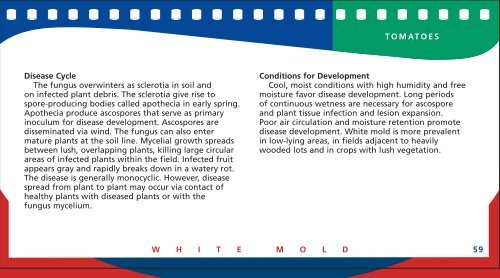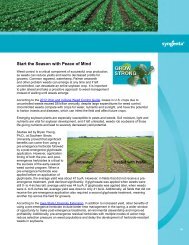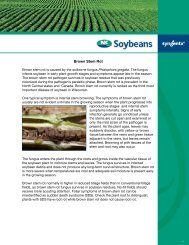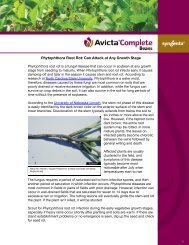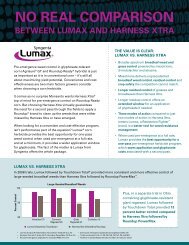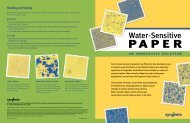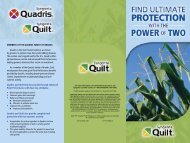Guide For Tomatoes
Ridomil Gold Bravo SC - FarmAssist
Ridomil Gold Bravo SC - FarmAssist
- No tags were found...
Create successful ePaper yourself
Turn your PDF publications into a flip-book with our unique Google optimized e-Paper software.
T O M AT O E S<br />
Disease Cycle<br />
The fungus overwinters as sclerotia in soil and<br />
on infected plant debris. The sclerotia give rise to<br />
spore-producing bodies called apothecia in early spring.<br />
Apothecia produce ascospores that serve as primary<br />
inoculum for disease development. Ascospores are<br />
disseminated via wind. The fungus can also enter<br />
mature plants at the soil line. Mycelial growth spreads<br />
between lush, overlapping plants, killing large circular<br />
areas of infected plants within the field. Infected fruit<br />
appears gray and rapidly breaks down in a watery rot.<br />
The disease is generally monocyclic. However, disease<br />
spread from plant to plant may occur via contact of<br />
healthy plants with diseased plants or with the<br />
fungus mycelium.<br />
Conditions for Development<br />
Cool, moist conditions with high humidity and free<br />
moisture favor disease development. Long periods<br />
of continuous wetness are necessary for ascospore<br />
and plant tissue infection and lesion expansion.<br />
Poor air circulation and moisture retention promote<br />
disease development. White mold is more prevalent<br />
in low-lying areas, in fields adjacent to heavily<br />
wooded lots and in crops with lush vegetation.<br />
W H I T E M O L D<br />
59


